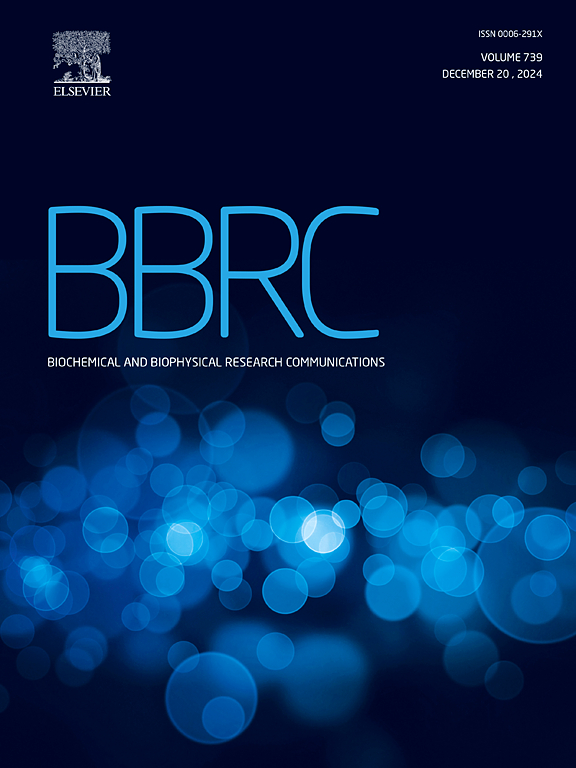甘草次酸触发烟草BY-2细胞脂质过氧化相关细胞死亡
IF 2.5
3区 生物学
Q3 BIOCHEMISTRY & MOLECULAR BIOLOGY
Biochemical and biophysical research communications
Pub Date : 2025-05-21
DOI:10.1016/j.bbrc.2025.152062
引用次数: 0
摘要
甘草次酸(Glycyrrhetinic acid, GA)是一种从甘草中提取的三萜皂苷,在动物细胞中具有多种生物活性,包括抗炎、抗病毒和抗肿瘤作用。然而,GA对植物细胞的影响在很大程度上仍未被探索。在这项研究中,我们研究了GA对烟草BY-2细胞的影响,BY-2细胞是一种植物细胞培养系统,可作为研究高增殖植物细胞死亡的有用模型。用GA处理BY-2细胞导致细胞死亡的显著增加,其方式取决于浓度和时间。为了阐明ga诱导细胞死亡的机制,我们使用荧光探针评估了线粒体膜电位和脂质过氧化。GA处理导致线粒体膜电位显著降低,同时脂质过氧化水平升高。这些结果表明,GA可诱导植物培养细胞死亡,并伴有线粒体功能障碍和脂质过氧化。我们的研究结果为GA在植物细胞中的生物活性提供了新的见解,并表明线粒体和脂质过氧化相关途径参与了GA诱导的细胞死亡。本文章由计算机程序翻译,如有差异,请以英文原文为准。
Glycyrrhetinic acid triggers lipid peroxidation-related cell death in tobacco BY-2 cells
Glycyrrhetinic acid (GA), a triterpenoid saponin from licorice (Glycyrrhiza species) exerts diverse biological activities in animal cells, including anti-inflammatory, antiviral, and antitumor effects. However, the effects of GA on plant cells remain largely unexplored. In this study, we investigated the effects of GA on tobacco BY-2 cells, a plant cell culture system that serves as a useful model for studying cell death in highly proliferative plant cells. Treatment of BY-2 cells with GA resulted in a significant increase in cell death in a manner dependent on both concentration and time. To elucidate the mechanisms underlying GA-induced cell death, we evaluated mitochondrial membrane potential and lipid peroxidation using fluorescent probes. GA treatment caused a marked decrease in mitochondrial membrane potential, along with an increase in lipid peroxidation levels. These findings suggest that GA induces cell death in plant cultured cells, accompanied by mitochondrial dysfunction and lipid peroxidation. Our results provide new insights into the biological activity of GA in plant cells and suggest the involvement of mitochondrial and lipid peroxidation-related pathways in GA-induced cell death.
求助全文
通过发布文献求助,成功后即可免费获取论文全文。
去求助
来源期刊
CiteScore
6.10
自引率
0.00%
发文量
1400
审稿时长
14 days
期刊介绍:
Biochemical and Biophysical Research Communications is the premier international journal devoted to the very rapid dissemination of timely and significant experimental results in diverse fields of biological research. The development of the "Breakthroughs and Views" section brings the minireview format to the journal, and issues often contain collections of special interest manuscripts. BBRC is published weekly (52 issues/year).Research Areas now include: Biochemistry; biophysics; cell biology; developmental biology; immunology
; molecular biology; neurobiology; plant biology and proteomics

 求助内容:
求助内容: 应助结果提醒方式:
应助结果提醒方式:


